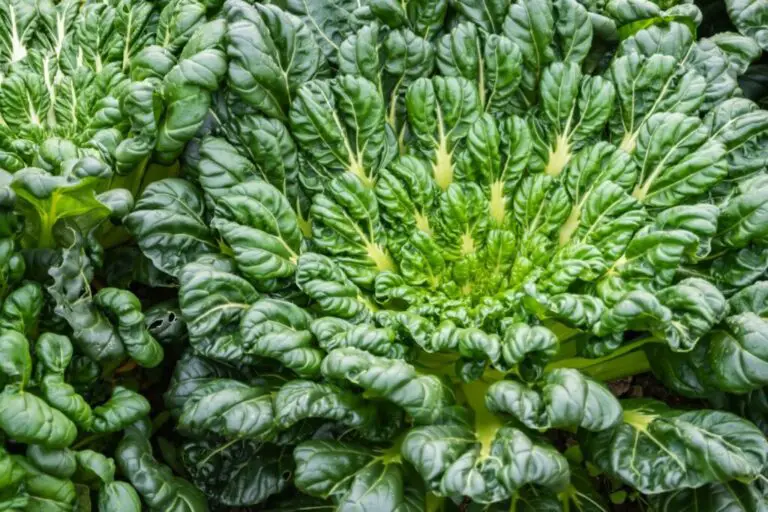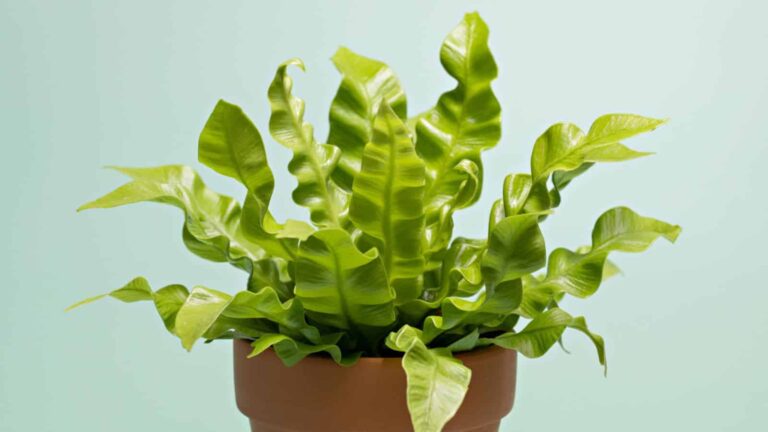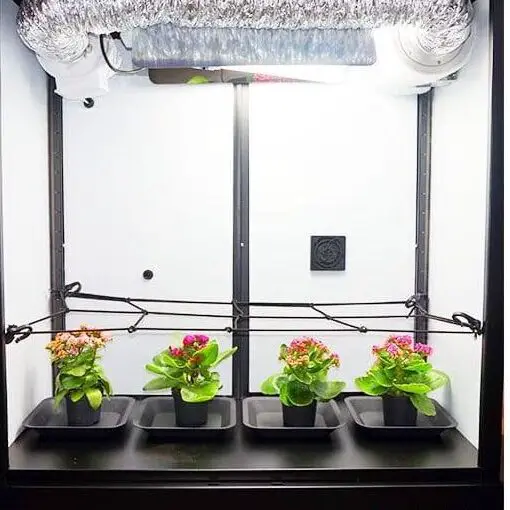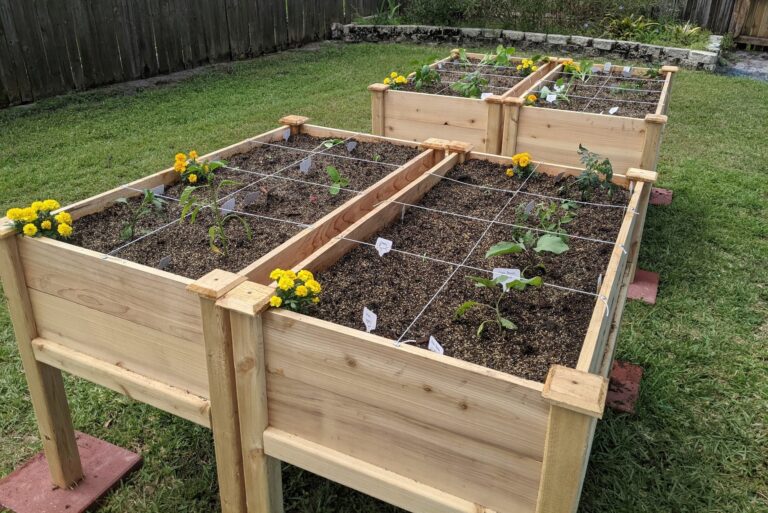Espalier Fruit Trees: Tips to Increase Yield in Limited Spaces.
The Art of Espalier: Maximizing Fruit Production in Limited Space.

Growing fruit trees in limited spaces can be a challenging endeavor for even the most seasoned gardener. However, with the art of espalier, this seemingly impossible feat can be accomplished with remarkable success. Espalier is a horticultural technique that involves training fruit trees to grow flat against a wall, fence, or trellis, thereby maximizing the use of vertical space. This not only allows fruit trees to thrive in constrained areas but also adds a stunning decorative element to any garden or outdoor space.
The benefits of espalier techniques in small gardens are manifold. Firstly, espaliered fruit trees take up significantly less space than traditional, free-standing trees, making them an ideal choice for urban or compact gardens. Secondly, consistent pruning and shaping of the branches result in a dense canopy, which in turn promotes better airflow, sunlight penetration, and disease resistance. Additionally, the controlled growth and extended exposure to sunlight lead to improved fruit quality and higher yields. With a little patience, dedication, and the right techniques, anyone can master the art of espalier and enjoy a bountiful harvest from their very own fruit trees in limited spaces.
Understanding the Benefits of Espalier Techniques in Small Gardens
Espalier techniques offer several benefits for small gardens, allowing gardeners to maximize their limited space while still enjoying the beauty and abundance of fruit trees. One of the primary advantages of espalier is its space-saving nature. By training fruit trees to grow flat against walls or fences, gardeners can make the most of vertical space, effectively utilizing the height available. This is particularly advantageous in small gardens, where every square inch counts.
In addition to space efficiency, espalier techniques also provide increased accessibility for maintenance and harvesting. When fruit trees are pruned and trained using espalier methods, they form a structured framework that makes it easier to reach the branches, leaves, and fruits. This means that gardeners can prune, fertilize, and harvest with greater ease and efficiency. Moreover, the organized growth pattern of espalier fruit trees allows for better airflow and sunlight penetration, reducing the risk of fungal diseases and promoting overall tree health. Overall, espalier techniques offer an excellent solution for small gardens, enabling gardeners to enjoy the beauty and bountiful harvests of fruit trees, even in limited spaces.

Selecting the Right Fruit Trees for Espalier Training
When it comes to selecting the right fruit trees for espalier training, there are a few factors that need to be taken into consideration. Firstly, it is important to choose trees that are naturally well-suited to pruning and training, as not all varieties will respond equally well to espalier techniques. Some popular fruit trees for espalier training include apples, pears, peaches, and citrus fruits. These trees have a natural inclination to be pruned and can be easily trained along a trellis or wall.
In addition to the type of tree, the size and growth habit should also be considered. Small to medium-sized trees are generally more suitable for espalier training, as they are easier to manage and maintain. It is also important to choose trees with flexible branches that can be trained into the desired shape without breaking. Finally, consider the climate and growing conditions in your area, as certain fruit trees may thrive better in specific environments. Consulting with a local nursery or horticultural expert can provide valuable insights and recommendations for selecting the right fruit trees for espalier training in your specific location.
Essential Tools and Supplies for Espalier Fruit Tree Maintenance
Maintaining espalier fruit trees requires a few essential tools and supplies to ensure their health and productivity. To keep your trees in top shape, you’ll need the following:
1. Pruning shears: Essential for trimming branches, shaping the trees, and promoting airflow. Make sure to choose a quality pair that fits comfortably in your hand, allowing for precise cuts.
2. Hand saw: Sometimes, larger branches may need to be removed, especially during annual pruning. A sturdy hand saw is necessary for this task, ensuring clean cuts and minimizing damage to the tree.
3. Wire cutters: As the trees grow, their branches will need support from a trellis or wire structure. Wire cutters are indispensable for maintaining and adjusting the training wires as needed.
4. Secateurs: Also known as hand pruners, secateurs are useful for detailed pruning work, such as removing small branches or deadwood. Look for a pair with a sharp blade and a comfortable grip.
5. Garden gloves: Protect your hands from thorns, splinters, and rough bark with a pair of sturdy garden gloves. Choose ones that provide a good grip and allow for dexterity.
6. Fertilizer: Providing the right nutrients is crucial for the health and productivity of your espalier fruit trees. Choose a balanced, slow-release fertilizer specifically formulated for fruit trees, following the manufacturer’s instructions for application rates and timings.
By having these essential tools and supplies on hand, you’ll be well-equipped to tackle the regular maintenance tasks of your espalier fruit trees and ensure their optimal growth and vitality.
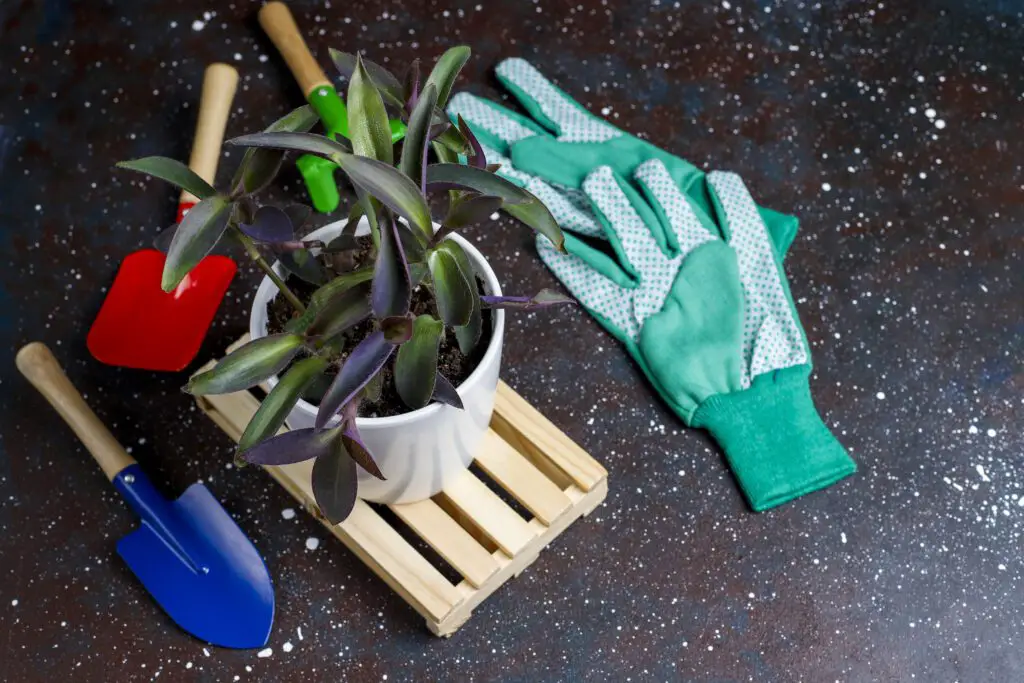
Step-by-Step Guide: How to Train Fruit Trees Using Espalier Techniques
When it comes to training fruit trees using espalier techniques, the first step is to select a young and healthy tree that is suitable for this form of training. Look for a tree that has a strong central leader and a sturdy trunk. It’s important to choose a variety of fruit trees that are naturally adaptable to espalier, such as apples, pears, or peaches.
Next, prepare the planting site by ensuring it has well-drained soil and receives full sunlight for at least six hours a day. Dig a hole that is slightly larger than the rootball of the tree and loosen the soil at the bottom. Gently place the tree in the hole, making sure the graft union (the swollen area on the trunk where the fruiting wood is grafted onto the rootstock) is slightly above the soil level. Fill the hole with soil, firming it gently around the tree to eliminate any air pockets.
After planting, it’s time to train the tree using espalier techniques. Start by installing a sturdy trellis or support system that will provide the framework for training the branches. Espalier can be done in various shapes, such as horizontal cordon, fan, or Belgian fence, depending on the desired aesthetic and available space. Use gardening ties or soft twine to secure the branches to the trellis, spacing them evenly and angling them according to the desired shape. Over time, as the tree grows, continue to prune and train the branches along the trellis, creating a beautifully structured espalier fruit tree.
Training fruit trees using espalier techniques can be a rewarding endeavor for gardeners with limited space. By following these step-by-step instructions and selecting the right variety of fruit trees, you can create a stunning and productive addition to your garden.
Pruning Strategies for Espalier Fruit Trees: Maximizing Growth and Yield
Pruning plays a crucial role in maximizing the growth and yield of espalier fruit trees. By employing proper pruning strategies, gardeners can shape their trees, promote healthy growth, and optimize fruit production. One key technique is to carefully remove unwanted or excess branches, allowing more sunlight and airflow to reach the remaining branches and fruit. This reduces the risk of disease, improves fruit quality, and encourages vigorous growth.
Another important aspect of pruning espalier fruit trees is maintaining a balanced structure. Regularly removing overly vigorous branches and redirecting growth can prevent the tree from becoming overcrowded and unmanageable. This promotes better light penetration throughout the canopy and facilitates even fruit development. Pruning also encourages the tree to put more energy into producing fruit rather than diverting it towards excessive foliage growth. Expert gardeners recommend regular pruning sessions throughout the year, with major pruning done during the tree’s dormant period, typically in late winter or early spring.
Fertilizing and Soil Management Tips for Healthy Espalier Fruit Trees
Fertilizing and soil management play crucial roles in maintaining the health and productivity of espalier fruit trees. Proper nutrient balance and soil conditions are essential for optimal growth and fruit development.
When it comes to fertilizing, it is important to provide the necessary nutrients in the right amounts and at the right time. Slow-release organic fertilizers are highly recommended for espalier fruit trees as they provide a steady supply of nutrients over an extended period. Additionally, incorporating compost or well-rotted manure into the soil during planting or as a top dressing can improve overall soil fertility.
To determine the specific nutrient requirements of your fruit trees, it is advisable to conduct a soil test. This analysis will reveal the existing nutrient levels, pH balance, and other crucial soil characteristics. Based on the test results, you can adjust fertilizer application accordingly, ensuring that your espalier fruit trees receive the appropriate blend of essential nutrients. Remember, excessive use of fertilizers can lead to nutrient imbalances and negatively impact tree health, so always follow the recommended application rates.
Dealing with Pests and Diseases in Espalier Fruit Trees
Espalier fruit trees, like any other plants, are susceptible to pests and diseases. However, with proper care and timely intervention, these issues can be minimized and managed effectively.
Pest infestations in espalier fruit trees can hinder their growth and productivity. Common pests that can affect these trees include aphids, mites, scale insects, and caterpillars. To address these issues, regular monitoring is key. Inspect your trees regularly for any signs of pest activity, such as sticky residue, distorted leaves, or visible insects. If an infestation is detected, various methods can be employed for control, such as introducing beneficial insects, using horticultural oils or soaps, or applying organic insecticides. It is important to follow proper dosage, application methods, and safety precautions when using any pest control measures.
Disease management is equally crucial for maintaining health espalier fruit trees. Common diseases that can affect these trees include fungal infections like powdery mildew, apple scab, or root rot. Good sanitation practices, such as removing fallen leaves, pruning infected branches, and promoting air circulation, can help to prevent the spread of diseases. Fungicides may also be used as a preventive measure, but it is essential to choose products that are safe for fruit trees and follow the instructions provided. Additionally, choosing disease-resistant fruit tree varieties can significantly reduce the risk of infections.
By staying vigilant, practicing good cultural practices, and intervening promptly when necessary, gardeners can effectively deal with pests and diseases in their espalier fruit trees. Regular monitoring, timely action, and a holistic approach to plant health will ensure a bountiful and thriving harvest year after year.
Supporting Structures and Trellis Designs for Espalier Fruit Trees
Supporting Structures and Trellis Designs for Espalier Fruit Trees play a crucial role in the success of Espalier training. These structures provide the necessary support and framework for the fruit tree to grow in a predetermined pattern, showcasing its beauty and maximizing its productivity. When it comes to choosing the right supporting structure and trellis design, there are a few factors to consider.
First and foremost, the material of the structure should be durable and able to withstand the weight of the growing fruit tree. Common materials used for supporting structures include wood, metal, and wire. Wood is a popular choice due to its versatility and natural aesthetic appeal. Metal structures, such as iron or aluminum, offer strength and longevity. Wire, on the other hand, is commonly used to create the horizontal framework for the branches to grow along.
The design of the supporting structure should also align with the espalier technique you are employing. For horizontal espaliers, a simple wire system with multiple tiers is often used, allowing the branches to stretch out and develop horizontally. For vertical espalier, a lattice or trellis design can be utilized to guide the branches upwards. It is important to ensure that the trellis design provides ample space between the wires or slats to accommodate the growth of the branches and allow for proper air circulation.
In conclusion, supporting structures and trellis designs are essential components of espalier fruit tree training. By carefully selecting the appropriate material and design, you can provide the necessary support for the tree’s growth and create a visually stunning display in your garden. Whether you opt for a wooden trellis, a metal structure, or a wire system, remember to consider the specific espalier technique you are employing and provide ample space for the branches to develop. Stay tuned for the next section, which will delve into the timing and techniques for proper training of espalier fruit trees.
Espalier Fruit Trees: Timing and Techniques for Proper Training
Timing and proper training techniques are crucial for the successful espalier of fruit trees. One key aspect to consider is when to begin the training process. It is best to start this process when the tree is still young and flexible, usually during its first or second growing season. By starting early, the tree will have enough time to develop and adapt to the espalier structure as it grows.
In terms of techniques, there are two main approaches to training espalier fruit trees: horizontal and vertical. The horizontal technique involves training the branches in a flat, horizontal position along a support system, such as a wall or fence. This technique is ideal for maximizing sunlight exposure and promoting fruit production. On the other hand, the vertical technique entails training the branches vertically or diagonally. This method is useful for limiting space requirements and can be particularly effective for narrow areas. Whichever technique is chosen, it is important to ensure that the branches are securely fastened and supported, allowing for proper growth and development.
Espalier Fruit Tree Training: Horizontal vs. Vertical Techniques
Espalier fruit tree training offers gardeners a unique opportunity to maximize their vertical space and create beautiful, productive landscapes. When it comes to deciding between horizontal and vertical techniques, there are several factors to consider.
Horizontal training involves training the branches of the fruit tree to grow in a wide, fan-like shape along a structure such as a trellis or fence. This method is preferred for smaller spaces, as it allows for better light exposure on all sides of the tree. Additionally, horizontal training promotes better air circulation, which can help prevent the development of fungal diseases. It also allows for easier pruning and maintenance, as the branches are more accessible.
On the other hand, vertical training involves training the branches to grow in an upright fashion, often against a wall or other vertical structure. This method is ideal for narrow spaces or areas where a wider spread is not desired. Vertical training can create a stunning, space-saving display, especially when multiple trees are trained in a row. However, it is important to note that vertical training may require more careful pruning and maintenance to ensure even light distribution and avoid overcrowding.
Ultimately, the choice between horizontal and vertical techniques will depend on the specific limitations and goals of your garden space. Consider factors such as available sunlight, desired fruit yield, and aesthetic preferences when making your decision. Whichever technique you choose, with proper training and maintenance, espalier fruit trees can transform even the smallest of gardens into a fruitful oasis.
Harnessing Sunlight: Positioning and Orienting Espalier Fruit Trees
Positioning and orienting espalier fruit trees in the right way is crucial for harnessing sunlight and maximizing their growth potential. When it comes to positioning, it is important to choose a location that receives full sun for at least six hours a day. Sunlight is vital for photosynthesis, the process by which plants convert light energy into chemical energy, fueling their growth and development. Placing your espalier fruit trees in a spot that receives ample sunlight ensures that they can produce an abundance of sweet and juicy fruits.
In addition to selecting a sunny spot, orienting your espalier fruit trees correctly can further optimize their exposure to sunlight. The orientation refers to the angle or direction at which the branches and foliage of the tree face. For maximum sunlight absorption, it is recommended to orient the branches towards the south or southwest in the northern hemisphere, or north or northeast in the southern hemisphere. This allows the trees to capture the most sunlight throughout the day, as the sun is typically positioned in the southern part of the sky. By strategically positioning and orienting your espalier fruit trees, you can ensure they receive an optimal amount of sunlight, leading to healthy growth and bountiful harvests.
Training Espalier Fruit Trees Against Walls and Fences
Training espalier fruit trees against walls and fences is a popular technique that allows gardeners with limited spaces to grow fruit trees while maximizing their productive potential. By utilizing vertical space, these trees can be trained to grow compactly and decoratively, making them an attractive addition to any garden or outdoor space.
When training fruit trees against walls and fences, it is crucial to consider the orientation and position of the tree in the sunlight. Ideally, the tree should be positioned so that it receives ample sunlight throughout the day. This will ensure optimal growth and fruit production. Additionally, it is important to provide adequate support for the tree by using a sturdy trellis or wire framework attached securely to the wall or fence. This will help the tree maintain its shape and prevent it from leaning or falling over as it matures.
Training espalier fruit trees against walls and fences requires regular pruning and maintenance to ensure their healthy growth and productivity. Pruning should be done during the tree’s dormant season to minimize stress. It is important to remove any unwanted or crossing branches while encouraging the growth of the desired branches in the desired shape. Care should also be taken to regularly inspect the tree for pests and diseases, as they can easily spread between close-planted trees. By implementing these practices, gardeners can enjoy the beauty and bounty of fruit trees in even the smallest of spaces.
Espalier Fruit Trees in Containers: Tips for Success
Espalier fruit trees are a fantastic option for limited garden spaces, and they can even thrive in containers. Growing fruit trees in containers offers several benefits, such as ease of maintenance, the ability to control soil conditions, and portability. However, successful cultivation of espalier fruit trees in containers requires attention to specific tips and techniques.
First and foremost, selecting the right container is key. Choose a container that is large enough to accommodate the root system of the fruit tree and allows for proper drainage. Opting for a container with a wide base will provide stability and prevent top-heavy trees from tipping over. Additionally, consider containers made of terracotta or plastic, as they retain moisture better and help regulate temperature.
Next, it is crucial to choose the appropriate type of fruit tree for container cultivation. Compact varieties such as dwarf or miniature fruit trees work best, as they are naturally suited for limited spaces. Ensure that the chosen fruit trees are well-suited to the local climate and have a reputation for thriving in containers. Examples of suitable fruit trees for container espalier include apple, pear, citrus, and fig.
Proper soil and nutrition management is also essential for the success of espalier fruit trees in containers. Choose a well-draining potting mix that is rich in organic matter to promote healthy root development and growth. Regular fertilization with a balanced organic fertilizer will provide the necessary nutrients for robust fruit production. Remember, container-grown fruit trees may require more frequent watering and feeding compared to those growing in the ground.
Knowing how to properly prune and train the espalier fruit tree is crucial for achieving the desired shape and maximizing productivity. Regular pruning helps control the growth and maintains the desired form, ensuring that the tree remains manageable in a container. Use plant ties or wire to attach the branches to the supporting structure, allowing for proper growth and shaping. Additionally, regular monitoring and maintenance are necessary to identify and address any pests or diseases promptly.
Successfully growing espalier fruit trees in containers requires careful attention to the specific needs of the trees. By following these tips and techniques, gardening enthusiasts can enjoy the beauty and bounty of fruit trees even in limited spaces. So, whether you have a small balcony or patio, consider adding the artistic touch of espalier fruit trees in containers to enhance the beauty of your garden.
Harvesting and Pruning Routines for Mature Espalier Fruit Trees
Harvesting and pruning are crucial routines for maintaining the health and productivity of mature espalier fruit trees. Proper timing and technique are essential to ensure a bountiful harvest and promote optimal growth for the following season. When it comes to harvesting, it is important to strike the right balance between ripeness and freshness. While it can be tempting to wait for fruits to fully ripen on the tree, they are often at risk of becoming overripe or attracting pests. Therefore, it is recommended to harvest fruits slightly underripe and allow them to fully ripen off the tree.
Pruning, on the other hand, plays a significant role in shaping the tree, maintaining its size, and maximizing fruit production. It is advisable to perform pruning during the dormant season, generally in late winter or early spring before the tree starts actively growing. This timing allows for better visibility of the tree’s structure and reduces the risk of disease entering fresh pruning wounds.
Pruning should focus on removing dead, damaged, or diseased branches, as well as thinning out excessive growth to improve air circulation and sunlight penetration. Additionally, it is essential to prune branches that cross or rub against each other, as they can often create wounds and promote the spread of pathogens. Regular pruning not only promotes good tree structure but also stimulates new growth and encourages the formation of fruiting spurs. By following a proper pruning routine, gardeners can maintain the health and productivity of their mature especially fruit trees for years to come.
Troubleshooting Common Issues in Espalier Fruit Tree
Espalier fruit trees can be a beautiful and efficient way to grow fruit in limited spaces. However, like any other gardening technique, they can encounter common issues that may hinder their growth and productivity. In this section, we will explore some of the troubleshooting tips to help you address problems and ensure the health and success of your espalier fruit trees.
One common issue that you may encounter with espalier fruit trees is inadequate fruit production. This can be caused by various factors, such as poor pollination, inadequate sunlight, or nutrient deficiencies. To address this, ensure that your trees receive at least six hours of direct sunlight each day, as this is crucial for fruit development. Additionally, consider hand-pollinating your trees using a soft brush or cotton swab to ensure sufficient pollen transfer. Moreover, regularly test your soil to detect any nutrient deficiencies and tailor your fertilization program accordingly. With the right care and attention, you can encourage your espalier fruit trees to produce an abundance of delicious fruits.
Another issue that may arise with espalier fruit trees is pest infestations. Common pests that can affect these trees include aphids, mites, and caterpillars. To control these pests, it’s important to regularly inspect your trees for any signs of infestation. If you detect pests, consider using organic pest control methods, such as neem oil or insecticidal soap, as they are less harmful to beneficial insects and the environment. Additionally, providing a clean and well-maintained growing environment can help prevent pest outbreaks. Remove any debris or fallen fruits that may serve as breeding grounds for pests. By staying vigilant and promptly addressing pest issues, you can protect your espalier fruit trees and ensure their optimal health and productivity.
Stay tuned for the next sections of our article, where we will delve into more troubleshooting tips and techniques for the successful cultivation of espalier fruit trees.
Why are my espalier fruit trees not producing any fruit?
There could be several reasons for this. It could be due to improper pruning techniques, lack of pollination, or a nutrient deficiency in the soil. It is important to assess your pruning methods, ensure proper pollination, and regularly fertilize your trees to encourage fruit production.
How do I know if my espalier fruit trees are being affected by pests or diseases?
Look out for signs such as discolored leaves, unusual spots or lesions, wilting branches, or the presence of pests like aphids or caterpillars. Regularly inspect your trees and consult with a local horticulturist or extension service for identification and treatment options.
Can I use any type of fruit tree for espalier training?
While many fruit tree varieties can be trained using espalier techniques, it is important to choose varieties that are naturally more compact and have flexible branches. Apples, pears, and peaches are commonly used, but it is best to research and select fruit tree varieties that are suitable for your specific climate and growing conditions.
How often should I fertilize my espalier fruit trees?
Espalier fruit trees benefit from regular fertilization during the growing season. It is recommended to fertilize them every 4-6 weeks using a balanced fertilizer. However, it is important to follow the specific fertilizer instructions and adjust the frequency and amount based on your soil conditions and the needs of your trees.
How can I prevent my espalier fruit trees from overgrowing and becoming unmanageable?
Proper pruning techniques are essential to control the growth of your espalier fruit trees. Regular and strategic pruning will help maintain the desired form and size, preventing them from becoming overgrown. It is important to follow proper pruning guidelines and remove excess growth to promote healthy and manageable trees.
Can I train my espalier fruit trees on a trellis against a fence or wall?
Yes, training espalier fruit trees against a fence or wall is a common technique. It maximizes space utilization and provides support for the branches. It is important to choose a sturdy trellis or support structure and regularly secure the branches to prevent damage from wind or excessive weight.
How do I protect my espalier fruit trees from extreme weather conditions?
Espalier fruit trees may require additional protection during extreme weather conditions such as frost, heatwaves, or strong winds. Using frost covers, shade cloth, or windbreaks can provide temporary protection. It is also important to regularly monitor your trees and address any weather-related damage immediately to prevent further issues.
Can I grow espalier fruit trees in containers?
Yes, espalier fruit trees can be grown in containers, making them suitable for small gardens or balconies. However, it is important to choose dwarf or patio varieties that are specifically bred for container gardening. Providing adequate drainage, regular watering, and appropriate potting soil are essential for the successful growth of espalier fruit trees in containers.

